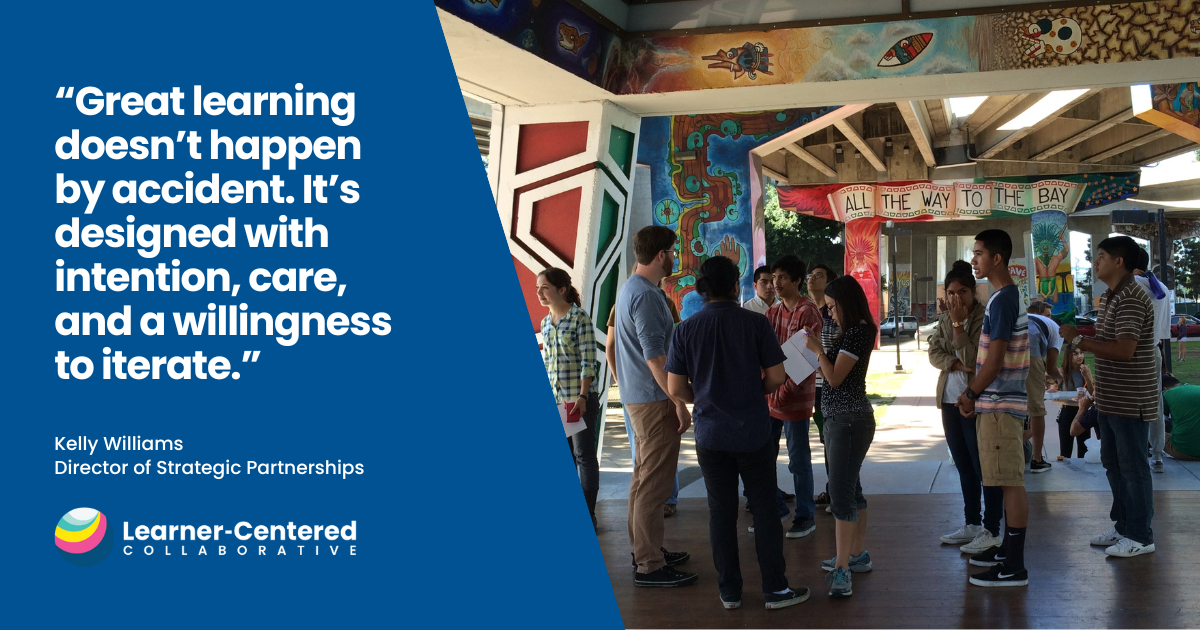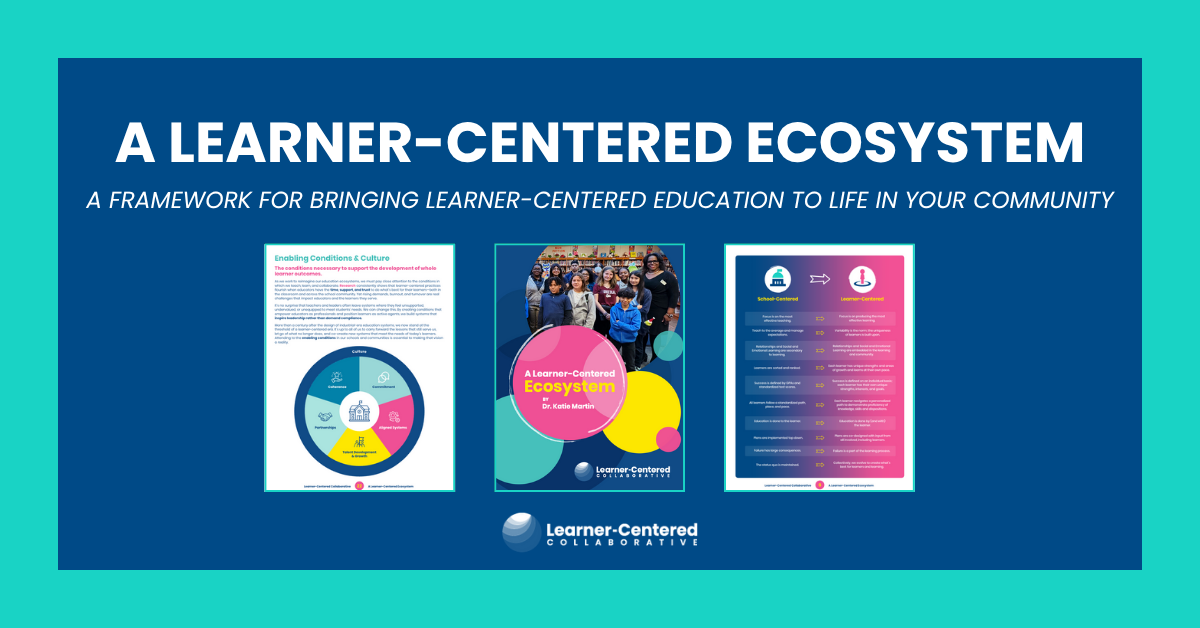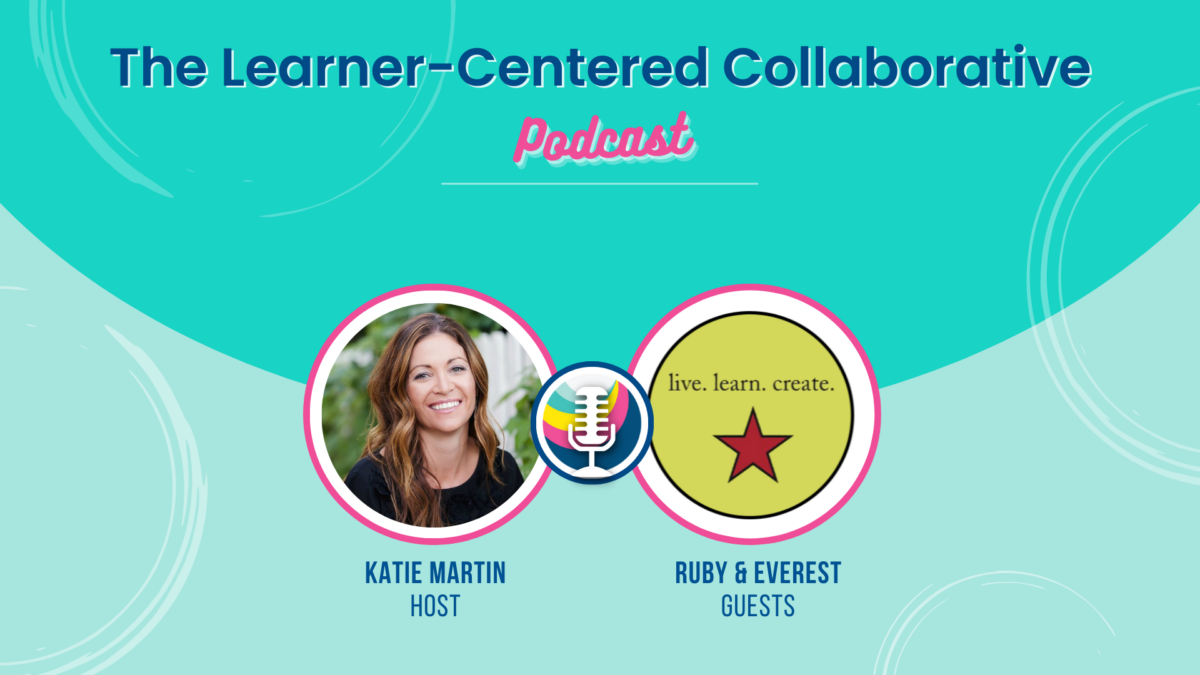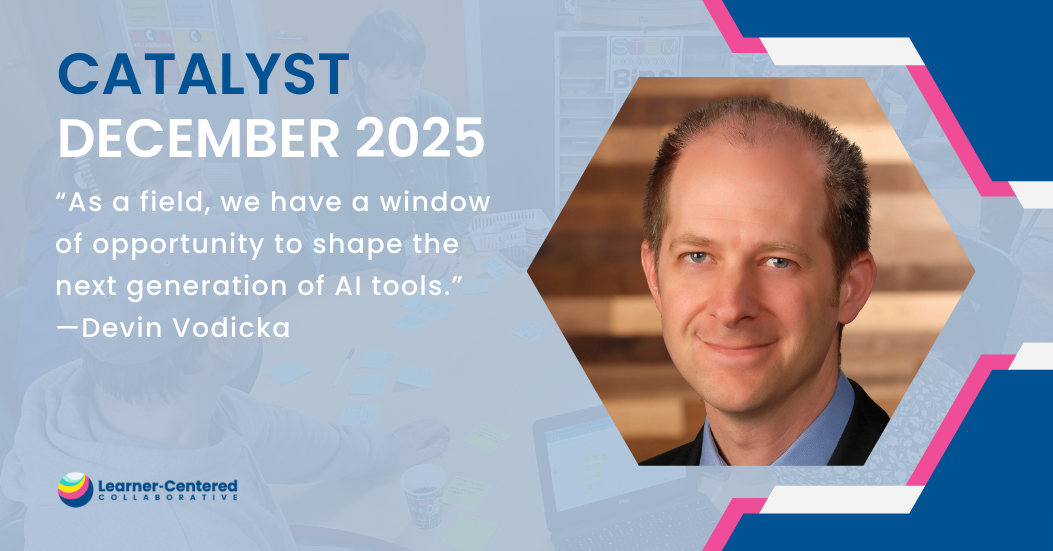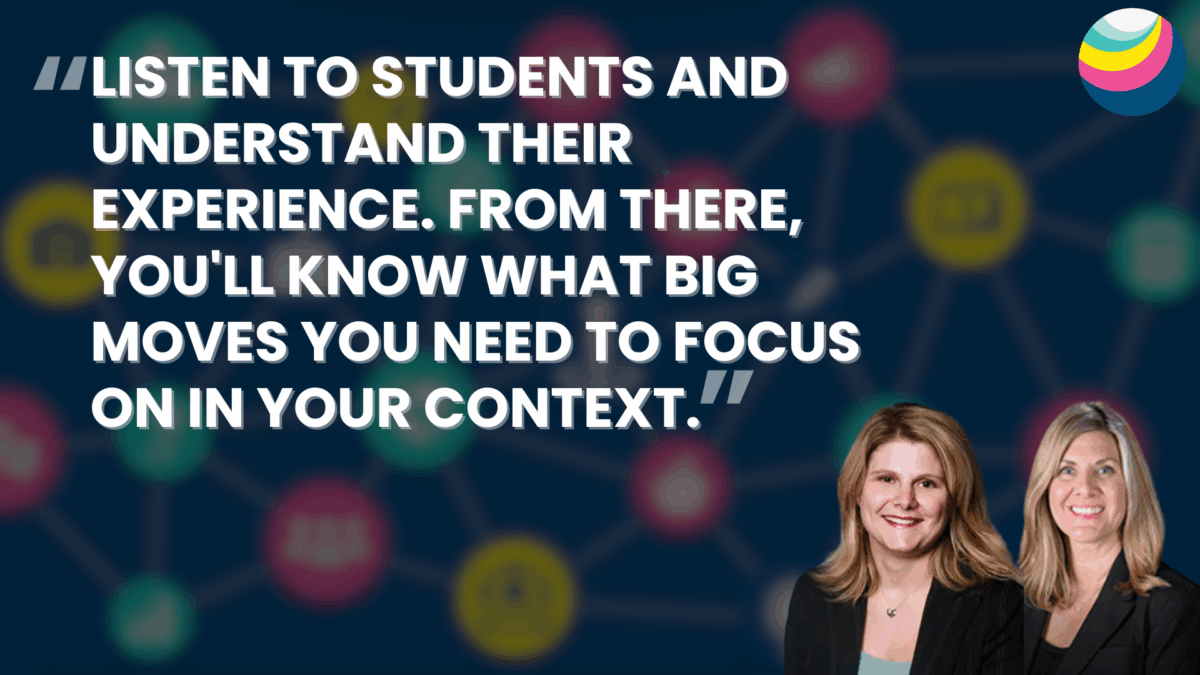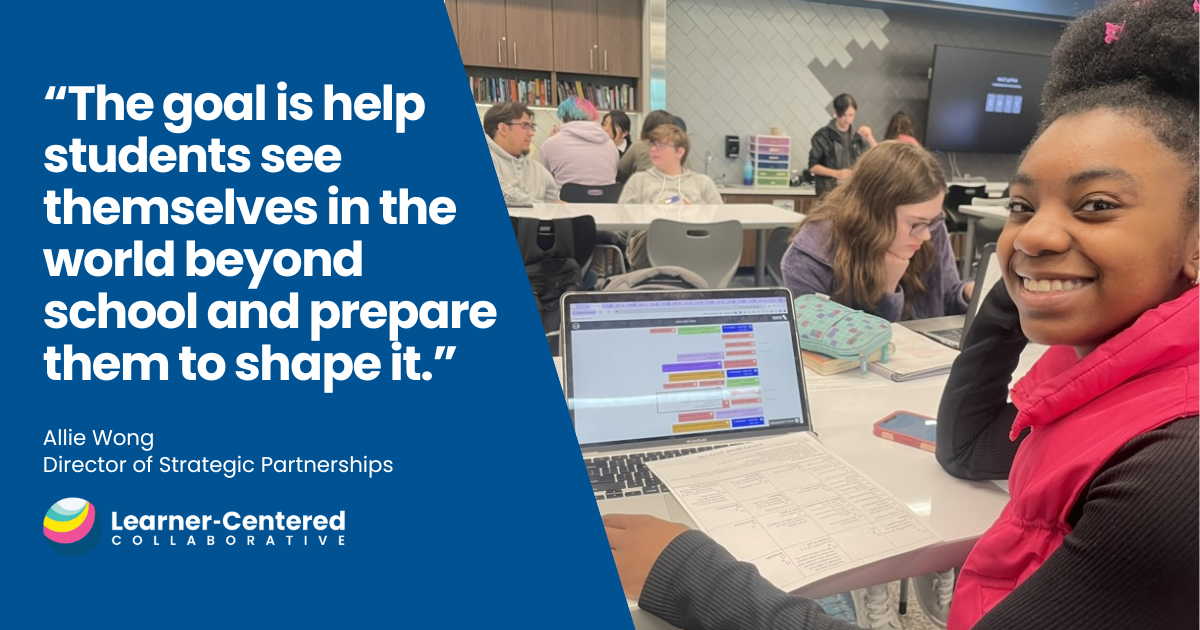What is the Purpose of School? A Call for Whole-Learner Outcomes.
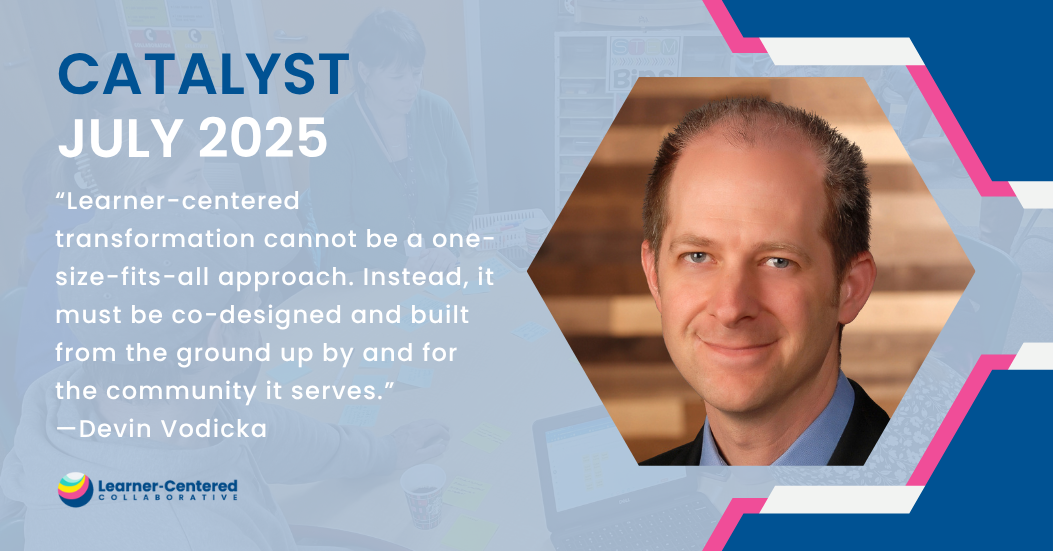
What is the purpose of school? For the past four decades, the prevailing national answer—shaped largely by the 1983 report “A Nation at Risk” and documented by historian Patricia Graham—has been singular: Achievement. This focus helped usher in an era of standardization, compliance, and testing. It was designed to respond to global economic anxieties and raise academic outcomes. But in doing so, it also narrowed our definition of success.
Despite profound social, economic, and technological shifts, this achievement-focused paradigm has proven remarkably resilient (even through a global pandemic). Yet for many, it no longer resonates with what we hope young people gain from their educational experiences.
When I ask school and district leaders, families, students, and community members what they want most for learners, I hear a desire for confidence, compassion, and collaboration. I hear a yearning for relevance, agency, and belonging. And, of course, I hear a practical hope for reading, writing, and mathematical skill development. Ultimately, I hear a call for a new purpose—one that develops the whole learner.
When learning communities begin their transformation journeys, nearly all start with this same question: “Why does school exist in the first place?” It’s from that shared inquiry that the path forward begins to emerge.
Centering Learners Converges to Whole-Learner Outcomes
When communities meaningfully engage with this question of purpose, they co-create new visions for what it means for a young person to be “educated” and an active participant in their individual and community’s thriving. Articulating these visions and making them actionable can take many shapes.
A great starting place for inspiration might include America Succeeds’ Durable Skills Advantage Framework, the World Economic Forum’s Future of Jobs Report, reDesign’s Future 9 Competencies, and the Learning Policy Institute’s Whole Child Design Framework. Reading through each of these resources will reveal significant convergence on a broad set of whole-learner outcomes. This is a natural result when there is a shared purpose. In this instance, the shared purpose is future-ready, whole-learner development.
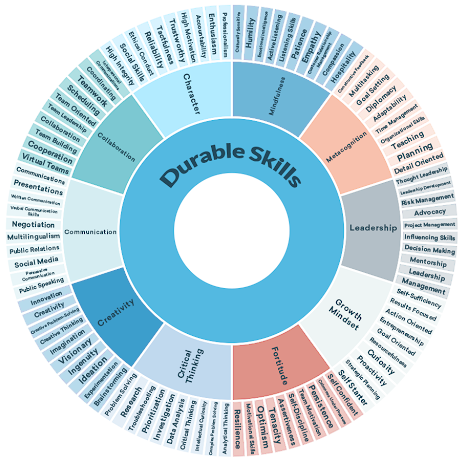
America Succeeds’ Durable Skills Advantage Framework
At Learner-Centered Collaborative, we work with our school and district partners (and their communities) to develop Portraits of a Learner. These portraits articulate the knowledge, skills, and mindsets learners need to thrive in life, work, and citizenship.
Whether in rural North Dakota or urban Southern California, themes like critical thinking, adaptability, collaboration, and well-being surface time and again. These are the durable skills that research confirms are essential for a rapidly changing world. They also align with what business leaders, higher education, and civic institutions all say they need from the next generation.

Portraits of a Learner examples from Laguna Beach USD, Escondido USD, and South Allegheny School District
But here’s the key: while there’s about 80% convergence on these broader outcomes, the remaining 20%—the local variation—is crucial. It reflects cultural relevance, community values, and historical context. In many of our partner schools in Hawai‘i, for example, land-based learning is non-negotiable. In other communities, it might be entrepreneurship, wellbeing, or multilingualism.
This is why learner-centered transformation cannot be a one-size-fits-all approach. Instead, it must be co-designed and built from the ground up by and for the community it serves.
Learn more about the Whole-Learner Outcomes and Learning Progressions in “A Learner-Centered Ecosystem.”
Avoiding the “Poster on the Wall” Trap
Co-creating a Portrait of a Learner with your community is incredibly energizing. And, it is just the beginning. Unfortunately, some learning communities create beautiful posters only to find themselves stuck. The portrait hangs on the wall, but little changes in classrooms or schedules.
This is where some of our partnerships begin—working with learning communities to bring that energy back and reignite belief in the community that the learner-centered vision they originally cast can be realized.
One of the keys to unlocking real progress is translation. We help communities define what their whole-learner outcomes look like developmentally through learning progressions. These describe what competencies like communication or problem solving look like for younger elementary learners all the way to graduating seniors.
Pair the progressions with a clearly defined learning model, and now you have a real foundation for seeing meaningful shifts in teaching and learning at the classroom level.
Districts and educators incoporate their learning models into everyday life in the classroom in a variety of ways. Our Learner Experience Accelerator App helps educators incorporate your district’s Portrait of a Learner into everyday lessons through AI. Check it out!
Education for a New Era
If we continue to define success as a single metric, we will continue to reproduce systems that sort, rank, and standardize. But if we define success as human flourishing, we open the door to something much more powerful.
We begin to see schools as ecosystems designed to nurture curiosity, cultivate identity, and connect learners to the world around them. We begin to design with (not just for) our communities. We begin to center joy, purpose, and contribution.
The world is always changing, and education should be designed to change with it at every moment. To build an education system that can do just that, we must ask and re-ask “what is the purpose of school?” Then, each day, let’s have the courage to live our answer.
If you’re ready to reimagine the purpose of school but aren’t quite sure where to begin, check out our five-question diagnostic. Results will suggest specific next steps, along with resources and contact information for those who desire additional support advancing learner-centered education in their context.
